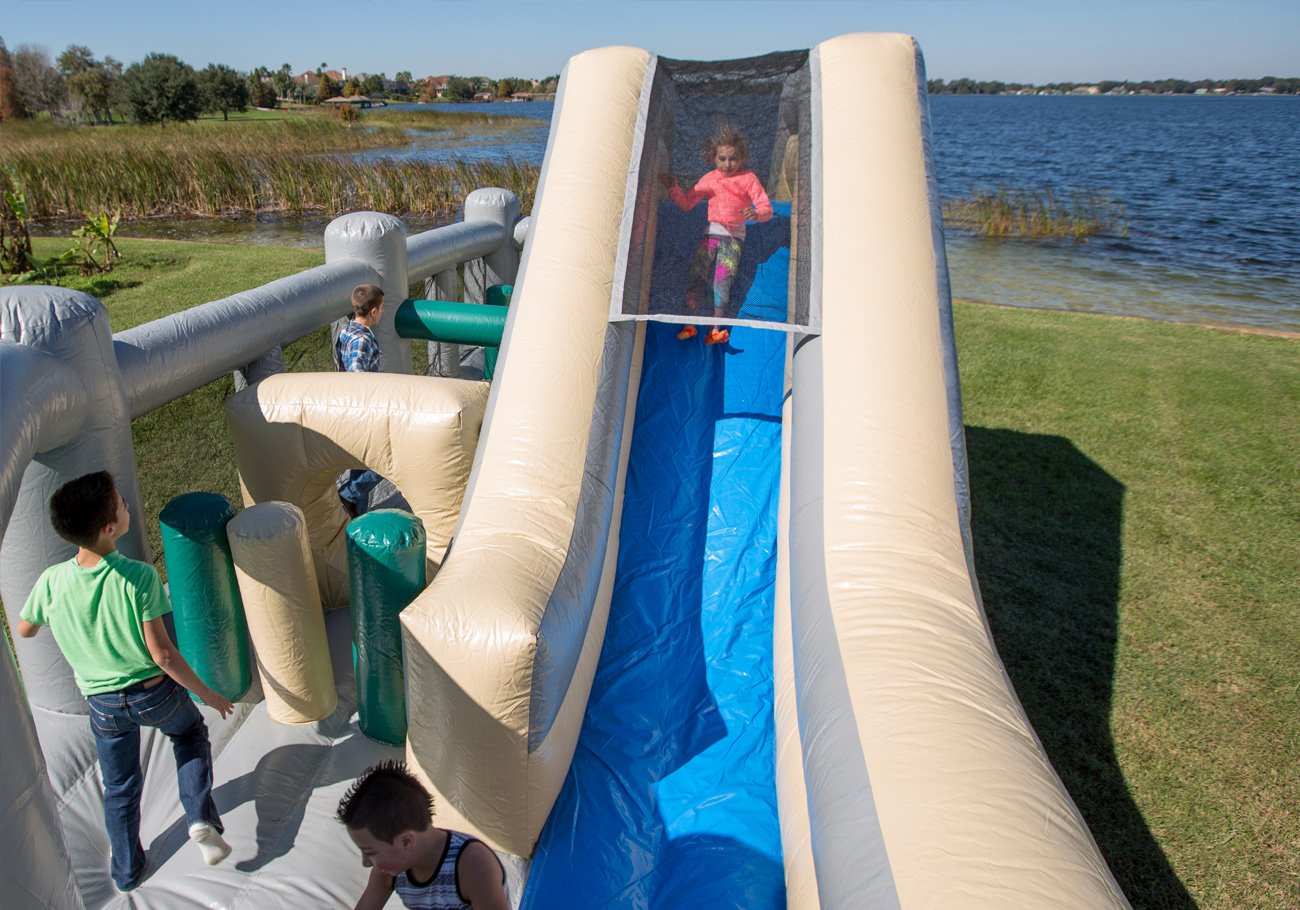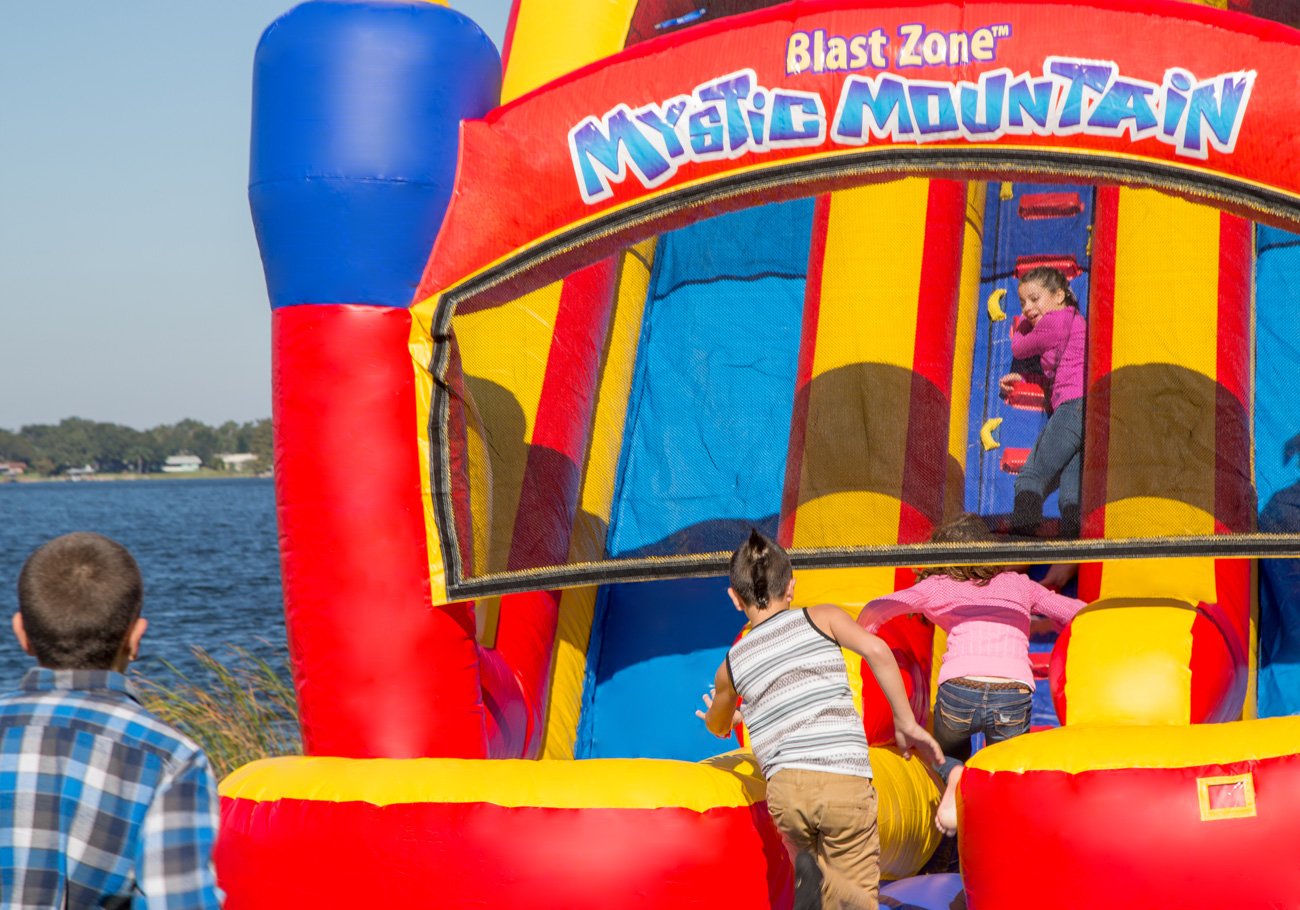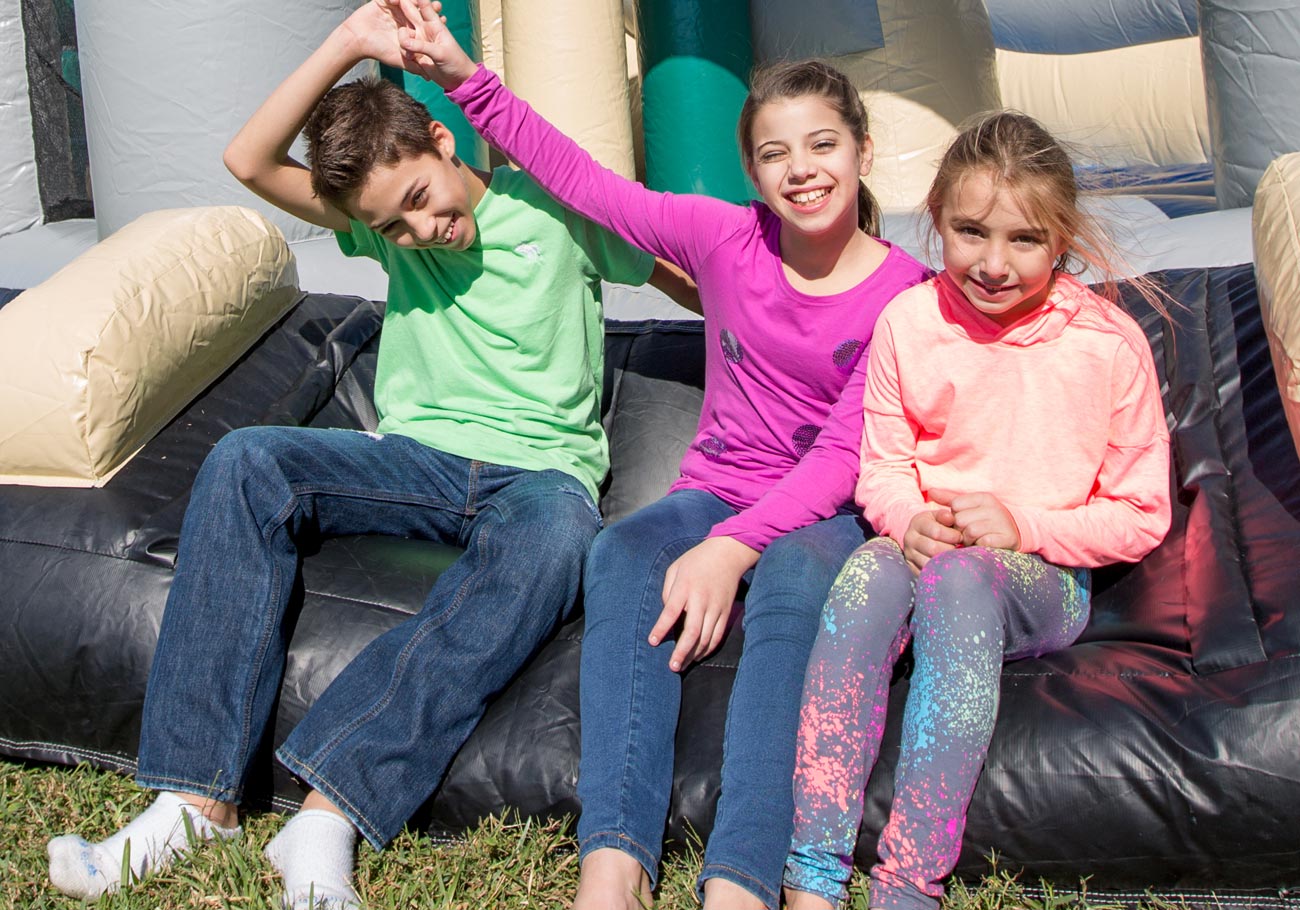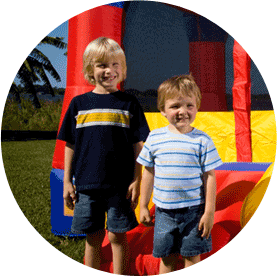As part of our ongoing commitment to safety, we are exploring deeper into the general rules of using Bounce Houses and Inflatable Water Parks safely. During this series we explore the “how’s” and “why’s” of the various aspects of safe inflatable use, such as anchoring, evenly matching players, sliding independently and more.
1 Rider at-a-time!

Kids want to test and push past boundaries, and this can lead to stretching the safety rules. If the rules are followed, Inflatable Slides are not only super-awesome, but also safe. However, after a few zips down the sliding lane, and as the play escalates, kids may be tempted to double up, and ride down together, as they look for new and exciting ways to test their boundaries.
Don’t allow this.
Man, we sure seem like wet beach towels over here at Blast Zone, don’t we? Well, for each safety rule, we have reason. And those reasons are, well… for safety. So what are those reasons?
1) The inflatable is engineered for specific user weights. Doubling up these weights will most likely put the rider’s collective weight over the weight the inflatable is engineered for. This could potentially damage your valuable inflatable, or worse, lead to instability on the slide.
2) Bonk. Yup. Bonk. The rider in front is going to stop an instant before the rider in the back. They are going to possibly bonk teeth-to-head, nose-to-head, or tumble over each other. These are not fun outcomes. This could lead to injury, and nothing takes away the fun like tears.

With Commercial Inflatable Slides, we’ve witnessed parents sliding down with their kids in their laps. This may seem like a great way to bond with your kids, but the result could be even worse. Check out our piece on Evenly-Matching Players for further insight behind the physics of a large adult landing on a small child, and reconsider this plan before sliding down. In cases with commercial inflatables, often the Inflatable Slide is rated to accommodate adults as well as kids, and many times younger kids like the adults to accompany them to the top. In this case, help your child up, let them slide first, make sure they have cleared out of the landing path, then try to hide your own childish grin as you zip on down.
And please don’t slide head first. Well talk about this later.
So keep it safe, and keep the fun going. Resist the urge to ride down the slide with your kids, and if you see kids “doubling up” use your keen common-sense-parenting skills to break it up. Always make sure kids are following the safety rules, and Have a Blast!

